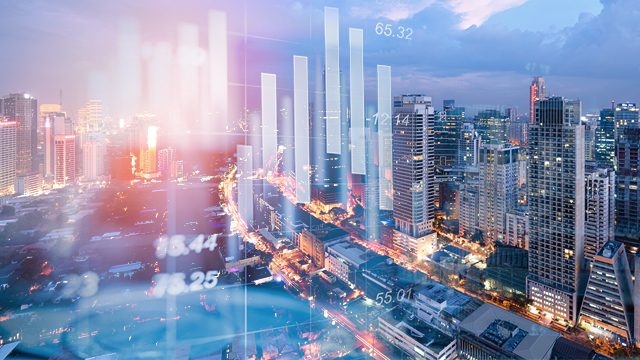SUMMARY
This is AI generated summarization, which may have errors. For context, always refer to the full article.

MANILA, Philippines – Just a decade ago, no one would have ranked the Philippines as one of the brightest prospects for investment in Southeast Asia.
Yet last week, American media firm US News and World Report went one step further by ranking the country as not just the best country to plow their cash into in the region but in the world as well.
Somewhat dimming the luster, however, is the fact US News is not a noted economic observer. Furthermore, the outlet used a year-old report by the United Nations Conference on Trade and Development in its appraisal of the Philippines as an investment destination.
That report said, “top executives maintain their confidence in developing Asia’s economic performance and are also forecasting investments in the south-eastern part of the region, with Indonesia, Thailand, the Philippines, Vietnam and Singapore, in that order, still figuring among the most promising host countries.”
Another potential complication is that data from domestic investment promotion agencies, led by the Board of Investments and the Philippine Economic Zone Authority (PEZA), showed foreign investment pledges were down more than 50% at the end of last year.
Optimistic outlook 2018
Despite this, economists polled by Rappler were upbeat about prospects for foreign direct investment for this year.
Dennis Mapa, Dean of the University of the Philippines School of Statistics, agreed with US News’ assessment of the country’s investments prospects and highlighted the country’s favorable demographics in particular.
The country is projected to have a population of more than 107 million by the end of this year with a fertility rate of 1.9% annually and a median age of around 23 years old.
“You have a young population so that brings a lot of opportunities and now it is also part of the government’s agenda as part of the Philippine development Plan to increase income through the demographic dividend,” Mapa explained.
The young and growing population acts as draw to investors not only for a large potential consumer market but also for large labor pool. The advantage is pronounced because countries like China, Japan, and Singapore all face declining populations.
Cid Terosa, dean of the University of Asia and the Pacific (UA&P) School of Economics, explained foreign investment pledges represent investment intentions that may or may not be actualized during the year.
It is possible for pledged investments to be actualized two or more years after being pledged.
While noting that the slowing down of pledged investments can indicate future expectations of changes in the business and economic environment, he pointed out, “actual investments last year showed strong performance because of the remarkable growth rate and stable macroeconomic environment of the country.”
Indeed, the country has already exceeded the government’s full-year FDI target of $8 billion registering a total of $8.7 billion through January to November of last year with December yet to be counted according to the Bangko Sentral ng Pilipinas.
“Inflation was manageable and fell on the lower range of the forecasted value, remittances maintained its upward trend, unemployment continued to record single digit rate, and domestic investors themselves were optimistic about the economy.” he said.
Terosa added several factors can exert downward pressure on FDIs this year, including higher inflation due to the implementation of the tax reform law, anxieties over rice supply, weakening of the peso, and rising prices of petroleum products.
Center for Research and Communication Research director Bernardo Villegas said, “pledges are not good indicators of actual FDIs” and that he “expected increased FDI inflows this year primarily from expansion programs of existing foreign investors.”
“Those already operating businesses in the Philippines are the ones who know the realities on the ground and can expand their respective businesses without much anxieties,“ he said further.
Villegas added that he expected the new investments to be in the hospitality industry and manufacturing enterprises from Japan, South Korea,Taiwan, Hong Kong.
These will be in car parts manufacturing, garments, and other labor intensive operations that are closing down in China and moving to Southeast Asia, he explained.
“There will also be investment in high-priced condominium office and residential units from Singapore, Hong Kong, Macau, and other neighboring countries looking for investment opportunities in real estate. The foreign partners of the Public-Private Partnership infrastructure projects will also add to FDIs,” he added. – Rappler.com
Add a comment
How does this make you feel?
There are no comments yet. Add your comment to start the conversation.